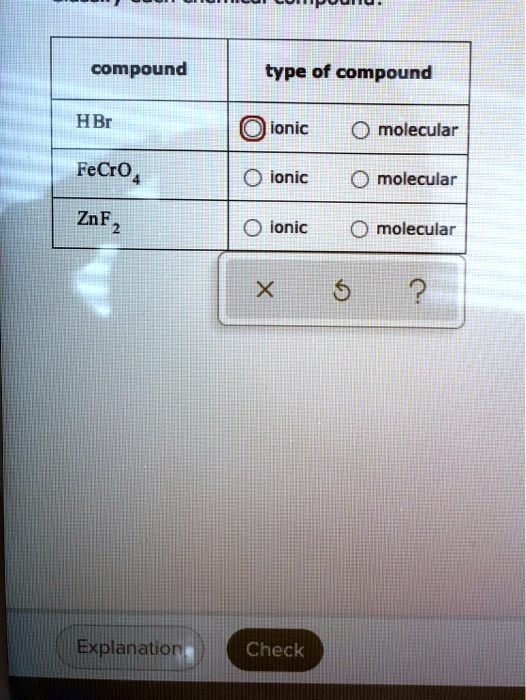Type of Compound HBr: Ionic FeCrO4: Ionic ZnF2: Molecular Explanation Check

The Correct Answer and Explanation is:
Here is the corrected classification of the compounds along with a detailed explanation:
Correct Classifications
- HBr: Molecular
- FeCrO₄: Ionic
- ZnF₂: Ionic
Explanation To classify each compound, we assess the types of elements involved and the nature of their bonds.
1. HBr (Hydrogen bromide) HBr is a molecular compound because it consists of hydrogen and bromine, both nonmetals. These two atoms are bonded covalently, meaning they share electrons to achieve stable outer shells. Molecular compounds are generally formed between nonmetals and are characterized by discrete molecules rather than extended ionic networks. In the gas phase, HBr exists as molecules, although it can ionize in water as a strong acid. Despite this behavior in solution, its fundamental structure remains covalent in nature.
2. FeCrO₄ (Iron(III) chromate) FeCrO₄ is classified as an ionic compound. It comprises the metal ion iron (Fe³⁺) and the chromate polyatomic ion (CrO₄²⁻). Ionic compounds result from electrostatic attractions between positively and negatively charged ions. Here, the iron cation donates electrons while the chromate anion accepts them. Although chromate itself contains covalent bonds within the ion, its interaction with the iron ion is ionic, leading to a crystalline lattice structure typical of salts.
3. ZnF₂ (Zinc fluoride) ZnF₂ is an ionic compound composed of the metal zinc (Zn²⁺) and two fluoride ions (F⁻). Zinc donates electrons to form a stable 2+ cation, and each fluorine atom accepts one electron to become an anion. The resulting electrostatic attraction between Zn²⁺ and F⁻ forms an ionic bond, yielding a solid lattice structure.
These distinctions are essential for predicting properties like solubility, melting point, and electrical conductivity in solution.
